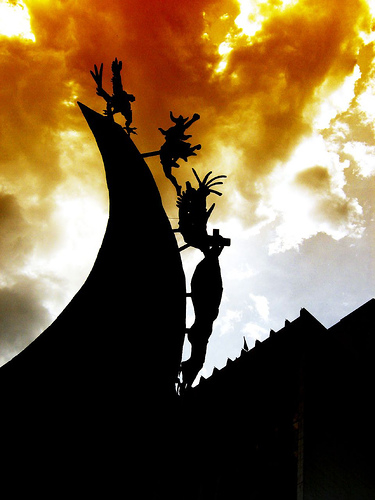Some history
Medellín was founded in 1616 by the Spaniard Francisco Herrera Y Campuzano as Poblado de San Lorenzo (Saint Lawrence Town) in what is known currently as El Poblado. In 1675 the queen consort Mariana of Austria created the Villa de Nuestra Señora de la Candelaria ("Town of Our Lady at Candelaria").
In 1826 the city was named the capital of the Department of Antioquia by the Spanish colonial administration. In 1803 the University of Antioquia, one of the most prestigious in Colombia, was founded. After Colombia won its independence from Spain, Medellín became the capital of the Federal State of Antioquia until 1888, with the proclamation of the Colombian Constitution of 1886. During the 19th century Medellín was a dynamic commercial center, first exporting gold, then producing and exporting coffee. After the Thousand Days War (1899 — 1902), Medellín was the first Colombian city to take part in the Industrial Revolution with the opening of textile companies, and transport projects like railways that allowed its export business to develop, and the founding of several universities and vocational training institutions, which created a petite bourgeoisie.
In the last quarter of the 20th century, Medellín became the headquarters of the infamous Pablo Escobar, the leader of a vast criminal organization, who became the seventh richest man in the world of the drugs trade, according to a 1989 Forbes Magazine's report.[4] Because he and his associates based their business in Medellín, his organization was named the "Medellín Cartel" by the American media.[5] During the 1980s and 1990s, Escobar led a terrorist war against the Colombian government, partly to dissuade the authorities not to trying to extradite him to the United States. He was killed by police forces on December 2, 1993.
At the beginning of the 21st century the city regained its former industrial dynamism, with the construction of the Metro de Medellín railway, and liberalised development policies, improved security, improved education, and promoted the city internationally as a tourist destination.
The Medellín Metropolitan Area is responsible for 67% of the Department of Antioquia's GDP and for 11% of the economy of Colombia.[6] Medellín is important to the region for its universities, academies, commerce, industry, science, health services, flower-growing, festivals and nightlife.
Source: Wikipedia.
Check useful information here
www.laboratoriomedellin.com.
About Culture
www.laboratoriomedellin.com/Arte.
